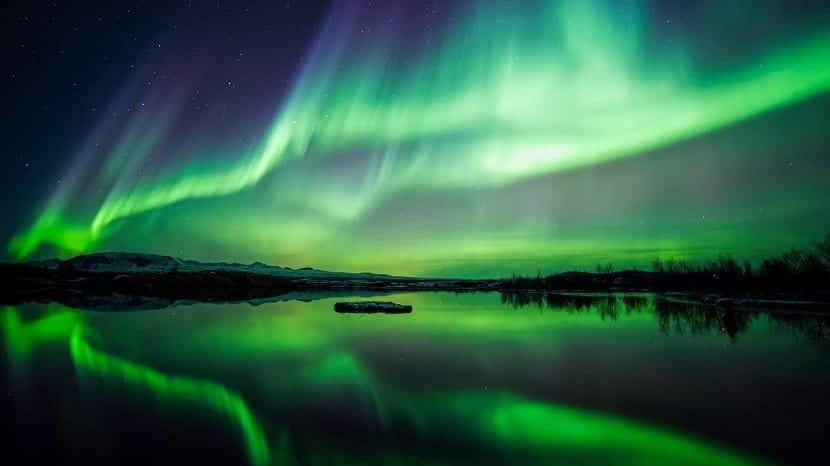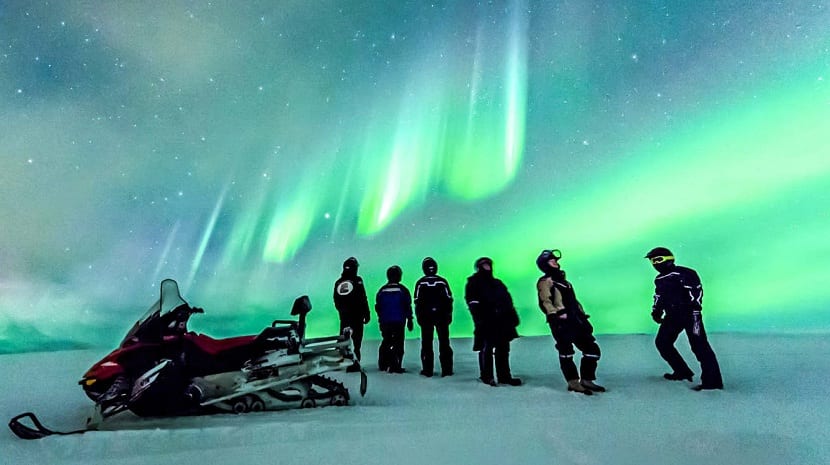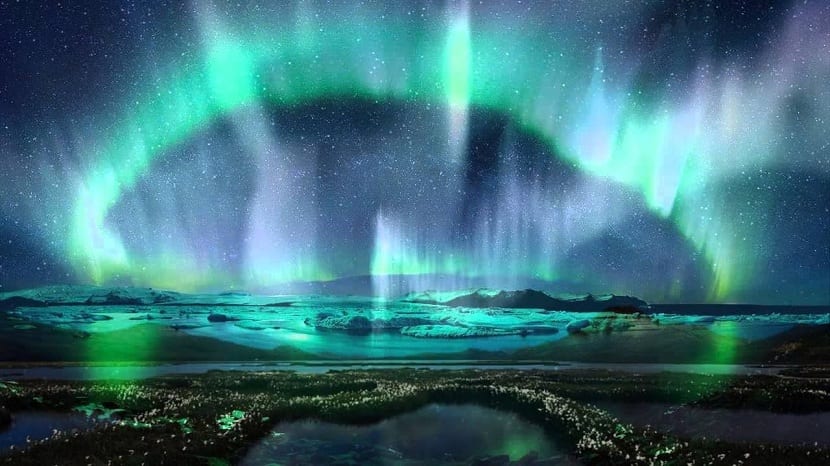
Surely you have ever heard of the northern lights and you have wanted to see this wonderful phenomenon of nature. These are bright lights in the normally green sky. Those that occur in the polar areas are called polar auroras. Next we are going to explain in detail everything you need to know about the polar aurora and their characteristics.
If you want to travel across the globe to go to the poles and see the beautiful polar auroras, just keep reading this article.
Characteristics of the polar aurora

When the polar auroras are seen from the north pole they are called the northern lights and when they are seen from the southern hemisphere the southern auroras. The characteristics of both are the same since they originate in the same way. However, throughout history, the northern lights have always been more important.
These natural phenomena offer a recommended sight to see once in your life. The only drawback is that its prediction is very complicated and the journey to the areas where it takes place very expensive. Imagine that you pay a good amount of money for a trip to see the Northern Lights from Greenland and it turns out that the days go by and they have no place. You have to turn away empty-handed and regret not being able to see them.
The most normal of these auroras is that the green color is the most abundant. Yellow, blue, orange, violet and even red tones can also be observed. These colors appear as small points of light in which they can form small arcs that meander the sky. The predominant color is always green.
The places where they can be seen most frequently it's in Alaska, Greenland, and Canada (See Northern lights in Norway). However, they can be seen from many other places on Earth, although less frequently. There have even been cases in which its sighting has been reported in areas near the equator.
Why does the polar aurora form?

What many scientists have sought over the years is how and why the polar aurora forms. It is a result of the interactions between the Sun and the Earth. The Sun's atmosphere emits a series of gases in a plasma state that contain electrically charged particles. These particles move through space until they reach Earth due to the effect of gravity and the Earth's magnetic field.
When it reaches a height in the atmosphere they can be viewed from the sky. The way in which the Sun sends these particles to all space and, in particular, to the Earth is through the solar wind. Solar wind It can cause serious damage to the communication systems of our planet and create a worldwide accident. Imagine being cut off for a long time without electricity of any kind.
Particles with electrical charges collide with gas particles in Earth's magnetosphere. We remember that our planet has a magnetic field that diverts a large part of electromagnetic radiation to outer space. This magnetosphere is formed by forces generated by the magnetic field.
The reason that auroras form more frequently at the poles and not at the equator is because the magnetic field is stronger at the poles than at the equator. For this reason, the electrically charged particles from the solar wind move along these lines that form the magnetosphere. When the particles of the solar wind collide with the gases of the magnetosphere, lights are produced that can only be seen with different inclinations of the solar rays.
How it is produced

The collision produced by electrons with the gases of the magnetosphere is what makes the protons freer and more visible and these auroras originate. They are generally dim auroras, but as they move across the magnetosphere they run into the polar regions where oxygen and nitrogen atoms make them look brighter. The atoms and molecules that receive the energy of the electrons coming from the solar wind reach a high level of energy that they release in the form of light.
The polar aurora usually occurs between about 80 and 500 km high. It is normal that the higher the auroras are generated, the less can be seen and with less detail. The maximum height at which a polar aurora has been recorded is 640 kilometers.
As for the color, it depends a lot on the gas particles with which the electrons collide. The oxygen atoms they collide with are the ones that emit a green light. When they collide with nitrogen atoms it appears with a color between blue and violet. If it collides with oxygen atoms but at a height of 241 to 321 km it will appear in red. This is the reason why they may have different colors, but they are usually green.
Dynamics of the polar aurora
Contrary to popular belief, they are not phenomena related to night and darkness. On the contrary, they can happen at any time of the day. The problem is that with sunlight they cannot be seen well and the spectacle of nature is not appreciated. Light pollution is also another factor to take into account.
At first glance, it seems that the polar aurora remains static without moving. However, when it reaches midnight, the arches they form begin to sway until they take on the shape of a cloud and disappear as they dawn.
If you want to see them, the best times and places to observe the polar auroras are at night and in the polar regions. More than half the nights of the year can enjoy the polar auroras So, if you are thinking of going to see them, find out where the best place and time is.
I hope that with this information you can learn more about the polar aurora.